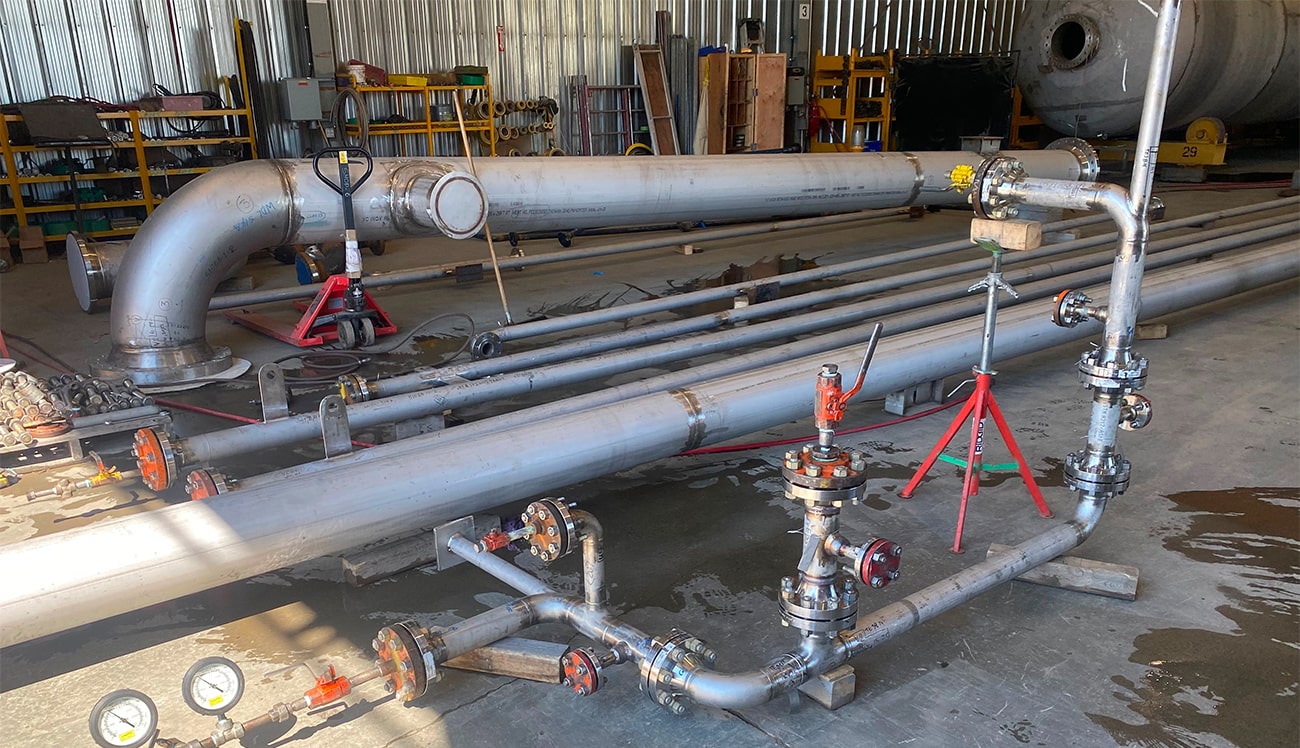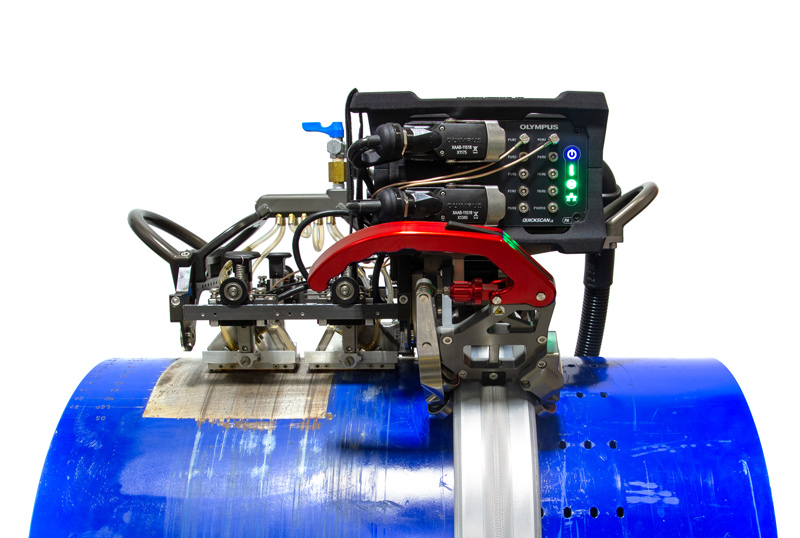Comprehensive Guide to Pipe Welding Evaluation: Guaranteeing Stability and Security in Pipe Building And Construction and Upkeep
The stability and safety and security of pipelines are extremely important in today's framework landscape, highlighting the important role of welding examination in pipe building and maintenance. Pipeline Welding Inspection. The intricacies involved in welding assessment raising relevant inquiries concerning sector criteria and the evolving technologies that might redefine these practices.

Relevance of Welding Assessment
Welding examination plays an essential role in making certain the integrity and security of pipeline systems. It serves as a fundamental procedure that confirms the top quality and integrity of bonded joints, which are usually the most prone factors in pipe building and construction. Through methodical examination, examiners can identify possible issues such as cracks, porosity, and incomplete fusion, which may jeopardize the architectural honesty of the pipeline.
The relevance of welding assessment prolongs past simple compliance with market requirements; it likewise safeguards public health and wellness and the atmosphere. Pipelines carrying hazardous materials pose significant risks if failings happen. Efficient examination procedures help avoid ruptures and leaks, reducing environmental damages and safeguarding communities. In addition, detailed examinations can improve the durability of pipeline systems, reducing the demand for pricey repair work and downtime.
In enhancement to ensuring security and conformity, welding assessment fosters a culture of quality control within organizations. By focusing on examination throughout the welding process, companies can build a credibility for reliability and excellence, eventually leading to boosted client confidence and service opportunities (Pipeline Welding Inspection). Hence, the value of welding assessment can not be overstated in the context of pipeline construction and maintenance
Trick Welding Procedures
Various welding processes are used in pipe building and construction, each with its very own advantages and applications. Among the most widely used approaches are Shielded Steel Arc Welding (SMAW), Gas Tungsten Arc Welding (GTAW), and Gas Steel Arc Welding (GMAW) SMAW is favored for its adaptability and capacity to execute well in numerous ecological problems, making it suitable for area applications.
GTAW, usually described as Tungsten Inert Gas (TIG) welding, is recognized for its capability to generate high-quality welds with excellent control over heat input, making it optimal for thin-walled pipes and stainless steel products. GMAW, or Steel Inert Gas (MIG) welding, supplies high deposition prices and is reliable for massive projects, often employed in the construction of pipes in controlled atmospheres.
Furthermore, Immersed Arc Welding (SAW) is used for its deep infiltration and high efficiency, specifically in the construction of large-diameter pipelines. Each of these processes adds to the general honesty and safety of pipe buildings, enabling welders to choose the most suitable approach based on product kind, job requirements, and ecological conditions. Understanding these vital welding processes is important for reliable pipe welding inspection.
Common Problems and Their Effect

Porosity, characterized by small gas pockets trapped within the weld, deteriorates the product and can result in leakages. Fractures, which might happen as a result of thermal stress and anxieties or inappropriate cooling, can result and propagate in structural failure under pressure. Damaging, where the base steel is eroded along the weld grain, lowers the efficient cross-section of the pipeline, raising the risk of fracture.
Insufficient fusion occurs when the weld steel does not effectively bond with the base steel, resulting in weak areas that might fail under stress and anxiety. Slag inclusion, the entrapment of non-metallic material within the weld, can additionally weaken the joint's stability. Recognizing and addressing these defects early in the construction procedure is essential to ensuring the long-term dependability and security of pipe systems, thus securing both the environment and the framework.
Inspection Tools and methods

Visual inspection is the very first line of defense, enabling assessors to recognize surface abnormalities, misalignment, or various other visible flaws. Ultrasonic testing utilizes high-frequency audio waves to spot inner imperfections, offering exact depth dimensions and characterizing issues without damaging the weld. Radiographic screening utilizes X-rays or gamma rays to create images of the weld, making it possible for the identification of inner gaps, splits, or incorporations.
Magnetic particle testing is particularly efficient for spotting surface area and near-surface suspensions in ferromagnetic products. This strategy includes using an electromagnetic field and great iron particles to the weld, exposing problems through the build-up of bits at flaw websites.
Along with these methods, specialized tools such as automated ultrasonic screening devices and electronic radiography systems boost inspection precision and performance, ensuring a thorough Going Here analysis of pipeline welds throughout building and upkeep.
Best Practices for Conformity
Sticking to finest methods for compliance in pipeline welding evaluation is essential for ensuring the stability and safety of the infrastructure. Organizations needs to develop a comprehensive top quality administration system that aligns with industry standards such as ASME, API, and AWS. This consists of establishing detailed welding treatments that specify the products, credentials, and strategies needed for welders.
Routine training and accreditation of evaluation workers are important to maintain high competency degrees. Examiners ought to know with various non-destructive screening (NDT) techniques, including ultrasonic screening, radiographic screening, and aesthetic examination, to successfully identify potential problems.
Documentation plays a crucial duty in conformity; maintaining accurate documents of evaluations, weld procedures, and personnel credentials aids to make sure traceability and responsibility. Set up audits and testimonials of welding methods should be carried out to identify locations for improvement and make certain adherence to established methods.

Verdict
Finally, the application of extensive welding evaluation procedures is critical for guaranteeing the integrity and safety and security of pipe building and maintenance. By identifying issues and using sophisticated evaluation strategies, companies can significantly enhance the top quality of bonded joints. Sticking to ideal techniques cultivates conformity with industry criteria, eventually protecting public health and avoiding ecological dangers. Continual improvement in assessment processes will add to the longevity and integrity of pipeline systems, emphasizing the essential duty of welding evaluation in the sector.
The integrity and safety and security of pipes are critical in today's check over here facilities landscape, emphasizing the crucial function of welding examination in pipeline building and construction and upkeep. Recognizing these key welding look at this website processes is vital for reliable pipeline welding evaluation.
Adhering to finest methods for conformity in pipeline welding evaluation is vital for making certain the honesty and safety of the infrastructure.In final thought, the application of strenuous welding examination methods is extremely important for ensuring the integrity and security of pipeline construction and maintenance. Continuous improvement in evaluation processes will contribute to the longevity and reliability of pipe systems, emphasizing the essential function of welding evaluation in the industry.